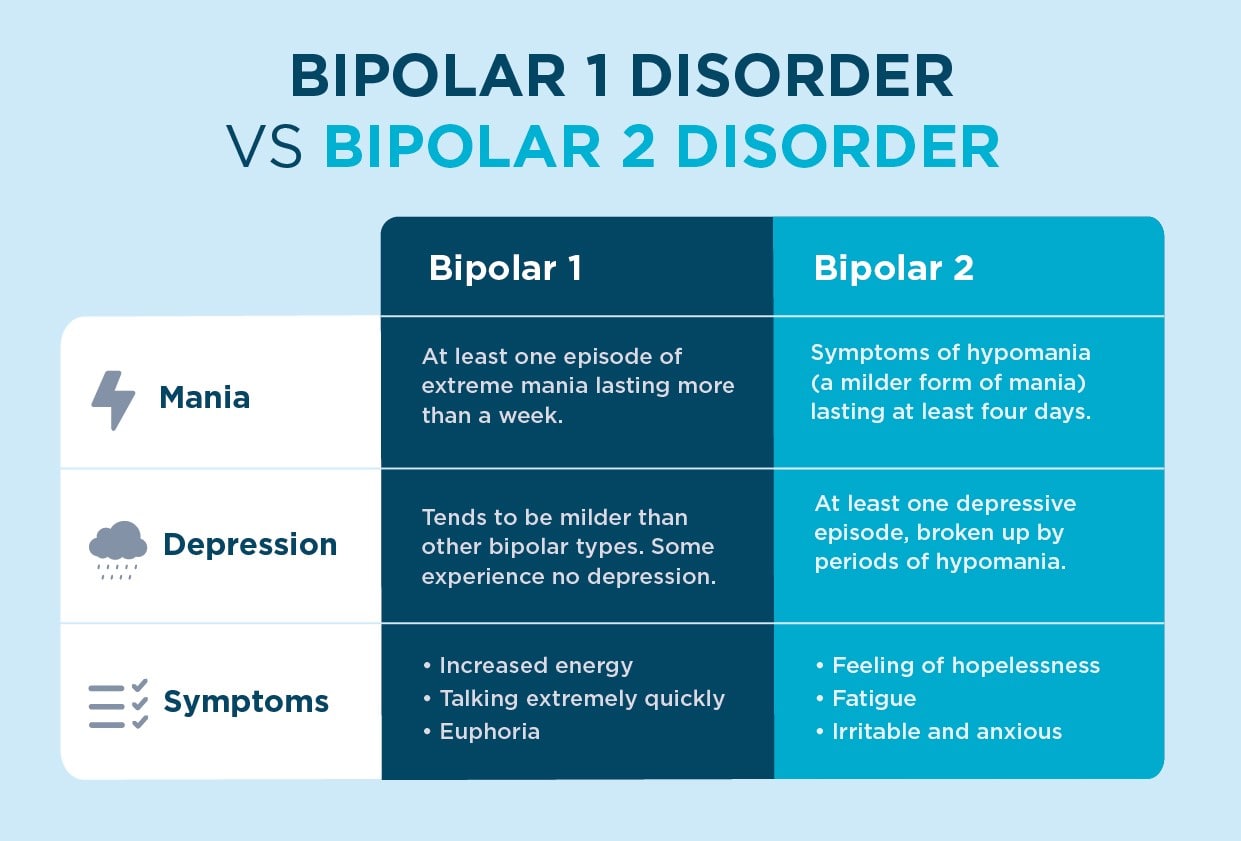Different types of bipolar disorder
Find out about the different types of bipolar disorder and the symptoms to look out for.
Bipolar disorder is often broken down into four main types, depending on the symptoms someone is experiencing and the severity of those symptoms. Here, we will outline what the different types of bipolar disorder look like and the unique features of each.
Bipolar disorder typically causes mood swings, with people experiencing highs (mania) and lows (depression). The symptoms of bipolar disorder and the intensity of these mood swings can be different for each person.
It's generally accepted that there are four distinct types of bipolar disorder. These are:
If you've experienced an episode of mania lasting longer than 1 week, or one that's been so severe that you required hospitalisation, then you may have bipolar 1. People often find that their depressive episodes are shorter or less intense with bipolar 1, but their mania is more severe.
You may be diagnosed with bipolar type 2 if you have regular episodes of depression, with milder manic episodes. Less severe mania is known as hypomania.
Rapid cycling bipolar disorder is diagnosed when you've had more than four mood swings in one year. These might be depressive episodes, manic/hypomanic episodes, or a mixture of the two. Your episodes may last for months, weeks or days at a time, and there may be short periods in between episodes where your mood is stable.
You may receive a diagnosis of cyclothymia if you've experienced both depressive and hypomanic episodes over the course of 2 years, but these aren’t severe enough to be diagnosed as bipolar 1 or 2. The mood swings that you experience as part of cyclothymia can last longer than in other types of bipolar disorder. Cyclothymia can also develop into full blown bipolar disorder.
Out of the four types of bipolar disorder, the most common diagnoses are bipolar type 1 and bipolar type 2. We explore these in more detail below.

Bipolar 1 is the most common type of bipolar disorder that someone can be diagnosed with. It’s characterised by intense and severe mania, which may cause symptoms such as:
These symptoms can be so intense that someone with bipolar 1 may need hospitalisation when they’re going through a manic episode. Any depression that you experience in bipolar 1 tends to be much milder than in other types. Some people with bipolar type 1 might not experience depression at all.
In bipolar 2, it’s likely that you’ll experience regular depressive episodes, which can cause depressive symptoms such as:
In order to receive a diagnosis of bipolar 2, you need to have experienced:
While most people with bipolar disorder will fall into one of the above categories, some people are diagnosed with what’s known as unspecified bipolar disorder. This is when they show some of the key symptoms of bipolar disorder, including depression, mania and hypomania, but don’t meet the exact diagnostic criteria to receive a formal diagnosis of a specific type of bipolar disorder.
However, receiving a diagnosis of unspecified bipolar disorder doesn’t mean that your condition is any less significant than the other types. It’s likely that someone with unspecified bipolar disorder will still need support to help them cope with their symptoms.
Being diagnosed with any type of bipolar disorder can feel overwhelming. However, it’s important to understand that you don’t have to suffer in silence; help is available.
At Priory, our bipolar disorder treatment specialists can help you to manage your mania and depression more effectively, using a range of techniques. These can include therapy and medication.
We can support you to get your symptoms under control and take steps towards the positive and healthy future you deserve.